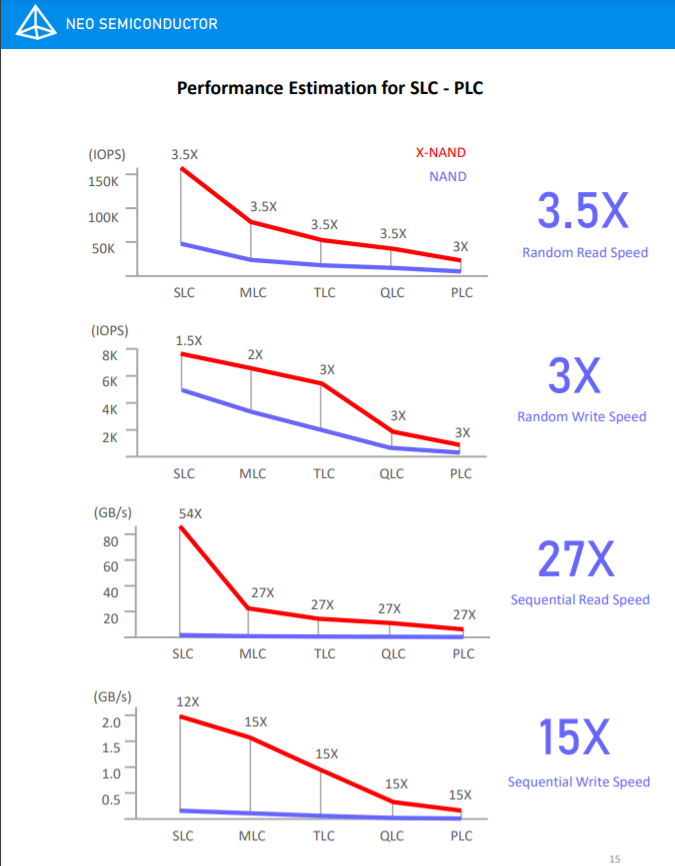X-NAND Technology Gets Patented, QLC Flash with SLC Speed
During last year's virtual Flash Memory Summit 2020, the CEO of NEO Semiconductors, Andy Hsu, presented a novel NAND technology that will give us better speeds and higher destiny. Called X-NAND, the tech was at the time just a presentation. However, today the company finally got its designs approved and patented.
The X-NAND technology is a novel approach to NAND memory development, designed by NEO Semiconductor. NEO Semiconductor is a silicon valley company headquartered in San Jose, started in 2012. To date, the company has been granted more than 20 memory-related patents and has more in the works.
X-NAND technology aims to have the speeds of Single-Level Cell (SLC) NAND and deliver the capacity of Quad-Level Cell (QLC) NAND flash, all while trying to do it in the smallest form factor as possible. We delivered a detailed look at what the technology offers in our coverage here.
X-NAND is basically a combination of two worlds, where the technology uses bits from SLC and QLC to combine it into one high-endurance, high-speed, high-capacity NAND solution. Below, you can find NEO's performance estimation chart, highlighting the potential of its devices. To get a more in-depth look at all aspects, including density and endurance, please refer to the 16-page whitepaper available here.

We're in an era that demands capacious high-speed storage and X-NAND seems to be the perfect choice for expanding storage capacity and performance, with applications like 5G and AI/ML seeing the biggest improvements.
Neo doesn't manufacture chips based on X-NAND tech but rather just provides memory makers a blueprint to produce their own solutions. NEO Semiconductor hopes to license its X-NAND IP to some big memory makers like Samsung, SK Hynix, and Micron, where they would purchase the IP and just embed it into their offerings. This would result in better market adoption of X-NAND, as memory makers have the production capacity and wherewithal to push the new technology into the market.
Get Tom's Hardware's best news and in-depth reviews, straight to your inbox.